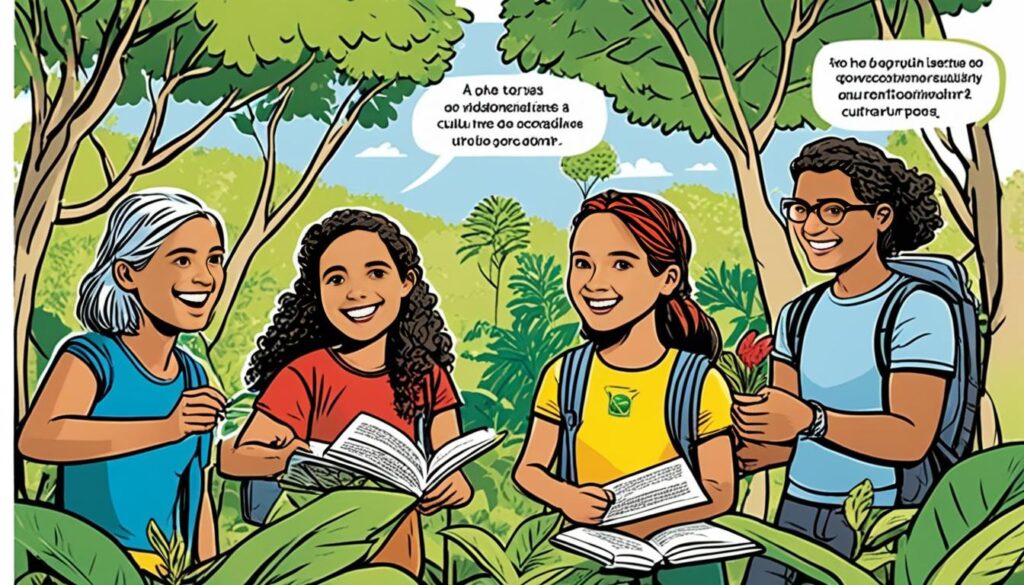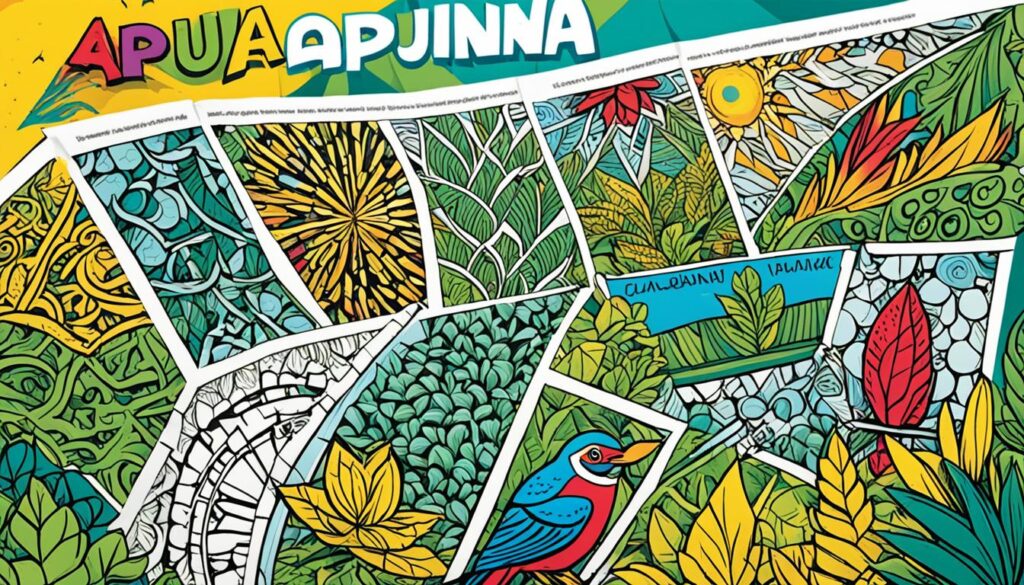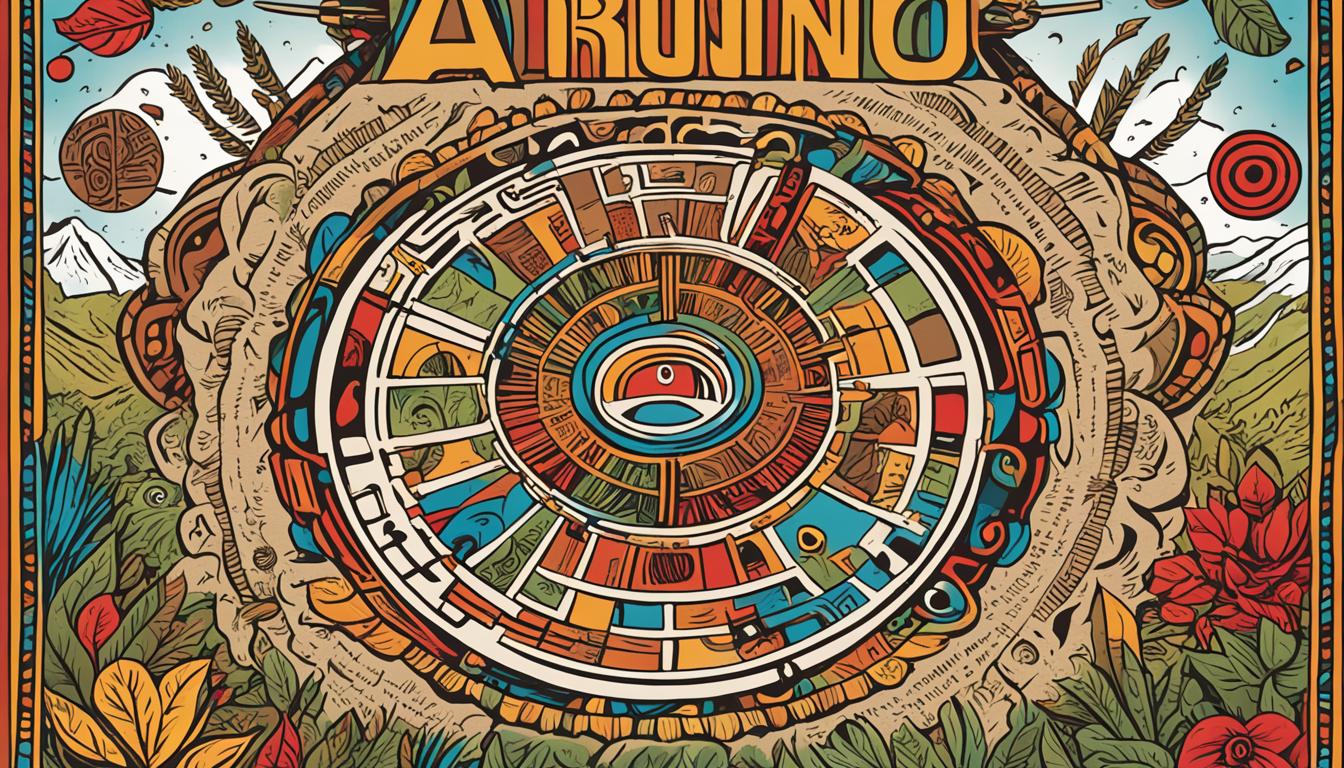Did you know that less than 30% of the Apurinã tribe in Brazil can speak their own language fluently? The Apurinã language, also known as Ipuriná, is a Southern Maipurean language spoken by the Apurinã people of the Amazon basin. With an estimated population of around 9,500 individuals, the Apurinã language is at risk of endangerment due to low transmission and cultivation among the younger generations.
The Apurinã language is an integral part of the cultural heritage of the Apurinã tribe. Efforts are being made to preserve and promote the language through language programs and learning resources. Join us as we explore the significance of the Apurinã language, its cultural impact, and the challenges faced in ensuring its survival for future generations.
Apurinã Cultural Heritage
The Apurinã language holds immense significance as an irreplaceable component of the cultural heritage of the Apurinã tribe. The Apurinã people boast a vibrant cosmological and ritual universe, deeply intertwined with their historical experiences shaped by the violent rubber cycles in the Amazon region. However, the Apurinã tribe faces ongoing difficulties in defending their rights, as certain ancestral lands remain unrecognized, subjected to repeated invasions by loggers.
Amidst these challenges, the Apurinã language remains a poignant reflection of their unique way of life and plays a substantial role in nurturing their cultural identity. Recognizing the intrinsic value of their indigenous language, the Apurinã people strive relentlessly to preserve and revitalize their linguistic heritage.
“Our language embodies the wisdom of our ancestors, the essence of our beliefs, and the soul of our Apurinã tribe. It is a testament to our indomitable spirit and vitalizes our cultural legacy.”
The Apurinã language serves as a conduit for passing down ancestral knowledge, deep-rooted traditions, and profound spiritual practices to future generations. It encapsulates the Apurinã people’s interactions with the natural world and their interconnected relationship with the Amazon rainforest.
Preserving Apurinã Cultural Heritage
The preservation of the Apurinã cultural heritage, intricately woven with their language, requires multifaceted efforts. These initiatives encompass the promotion of indigenous languages in Brazil, including the Apurinã language, through educational programs, awareness campaigns, and the empowerment of indigenous communities.
Efforts to reclaim and protect their ancestral lands, currently threatened by external encroachments, form an integral part of preserving the Apurinã cultural heritage. It is crucial to establish legal recognition and support for indigenous land rights, allowing the Apurinã people to safeguard their language, customs, and sacred sites.
Impacts of Apurinã Cultural Heritage
The Apurinã cultural heritage enriches Brazil’s cultural diversity, contributing to the nation’s plural identity. The indigenous knowledge, rituals, traditional practices, and mythology preserved within the Apurinã language offer profound insights into the interconnectedness of humans and the environment.
Exploring and cherishing the Apurinã cultural heritage fosters mutual respect, understanding, and the preservation of the invaluable wisdom encompassed within their indigenous traditions. It serves as a vital reminder of the need to protect and honor indigenous languages as custodians of ancient wisdom and guardians of cultural sustainability.
Apurinã Language Program and Learning Resources
Efforts are underway to preserve and promote the Apurinã language through a comprehensive language program and a wide range of learning resources. With the goal of ensuring the continuity of the language, these initiatives aim to teach the Apurinã language to younger generations and foster a deeper understanding of its cultural significance.
For individuals interested in learning Apurinã, there are various resources available. These include:
- Courses: Apurinã language courses provide structured learning opportunities that cover essential aspects of the language, including vocabulary, grammar, and pronunciation. These courses are designed to cater to learners of different proficiency levels, from beginners to advanced learners.
- Dictionaries: Apurinã dictionaries offer comprehensive word lists and definitions that help learners expand their vocabulary and gain a better understanding of the language. These dictionaries serve as valuable references for translation and language comprehension.
- Grammar Books: Grammar books provide detailed explanations of Apurinã grammar rules, sentence structures, and linguistic features. These resources offer learners the opportunity to delve deeper into the language and develop a solid foundation in Apurinã grammar.
The Apurinã alphabet, based on the Latin script, simplifies the learning process for beginners. Its familiar characters allow learners to grasp the writing system and pronunciation of the language more easily.
By making these resources accessible, the Apurinã language program aims to empower individuals with the knowledge and skills to learn Apurinã and actively contribute to the preservation of the language.

| Learning Resources | Benefits |
|---|---|
| Courses | Structured learning opportunities Progressive curriculum for different proficiency levels |
| Dictionaries | Comprehensive word lists Translation and language comprehension support |
| Grammar Books | Detailed explanations of grammar rules In-depth understanding of linguistic features |
Geographic Distribution of Apurinã Language
The Apurinã language is primarily spoken along the Purus River in the Northwestern Amazon region in Brazil. This region is home to several Indigenous communities, including the Apurinã people, who have a deep connection to their ancestral language.
With a total area of 1,819,502 hectares, the Apurinã communities are scattered across 27 Indigenous Lands along the river. These lands serve as important cultural and linguistic hubs, fostering the preservation and transmission of the Apurinã language.
However, the geographic distribution of the Apurinã language extends beyond the Amazon region. Many Apurinã people have migrated to Brazilian cities, such as Rondônia and Rio de Janeiro, where they continue to speak and maintain their language. This diaspora reflects the resilience and adaptability of the Apurinã community.
Furthermore, the distribution of the Apurinã language has been influenced by historical factors, including conflicts, disease, and migration. Despite these challenges, the Apurinã language has persisted, demonstrating its importance in the cultural fabric of Brazil.
To visualize the geographic distribution of the Apurinã language, refer to the map below:
Apurinã Language and Related Languages
The Apurinã language, belonging to the Purus branch of the Maipure-Aruak family, has interesting connections with other languages in the region. It shares certain similarities and contacts with languages like Jamamadi, Paumari, and Katukina, reflecting the linguistic landscape and cultural exchange among different indigenous communities in Brazil. However, the closest related language to Apurinã is that of the Manchineri, also known as Piro.
The Manchineri language is spoken by the Manchineri people who inhabit the upper Purus region in Brazil and the lower Urubamba valley in Peru. Their linguistic affinity with the Apurinã language showcases the interconnectedness of various indigenous languages within the Aruaque family.
While the Apurinã dialect holds a distinct place within the Purus branch, its connections with neighboring languages demonstrate the shared linguistic heritage and cultural interactions among different indigenous tribes in Brazil.

Apurinã Language and Related Languages
| Language | Spoken By | Region |
|---|---|---|
| Apurinã | Apurinã people | Northwestern Amazon region in Brazil |
| Manchineri (Piro) | Manchineri people | Upper Purus region in Brazil and lower Urubamba valley in Peru |
| Jamamadi | Jamamadi people | Amazonas state, Brazil |
| Paumari | Paumari people | Acre and Amazonas states, Brazil |
| Katukina | Katukina people | Acre and Amazonas states, Brazil |
Conclusion
The Apurinã language is a vital part of Brazil’s linguistic and cultural diversity. Efforts are being made to preserve and promote the language through the implementation of Apurinã language programs and the availability of learning resources. These initiatives aim to ensure the continuity of the Apurinã language and safeguard the Apurinã cultural heritage.
The Apurinã people have a rich cultural heritage that is closely intertwined with their language. The Apurinã language plays a crucial role in their identity and way of life, serving as a vehicle for the transmission of their traditional knowledge, history, and values. However, the language is facing the risk of endangerment due to low transmission and cultivation among the younger generations.
It is imperative to continue supporting the preservation and revitalization of the Apurinã language. By investing in Apurinã language programs and resources, we can empower the Apurinã community in their efforts to preserve their language and cultural heritage. This includes providing opportunities for the younger generations to learn and use the Apurinã language, fostering community engagement, and raising awareness about the importance of linguistic diversity and cultural preservation.
By safeguarding the Apurinã language, we not only contribute to the preservation of Brazil’s linguistic richness but also honor and respect the rights and cultural autonomy of the Apurinã people. Together, we can ensure that the Apurinã language continues to thrive, serving as a valuable asset for the community and future generations.
FAQ
What is the Apurinã language?
The Apurinã language, also known as Ipuriná, is a Southern Maipurean language spoken by the Apurinã people of the Amazon basin in Brazil.
Where is the Apurinã language spoken?
The Apurinã language is predominantly spoken by the Apurinã communities along the Purus River in the Northwestern Amazon region in Brazil.
How many people speak the Apurinã language?
The total population of the Apurinã people is estimated to be around 9,500 individuals, but fewer than 30% of the population can speak the language fluently.
Why is the Apurinã language at risk of endangerment?
The Apurinã language is at risk of endangerment due to low transmission and cultivation among the younger generations.
How is the Apurinã language connected to the cultural heritage of the Apurinã tribe?
The Apurinã language is an integral part of the cultural heritage of the Apurinã tribe. It reflects their unique way of life and plays a vital role in their cultural identity.
What efforts are being made to preserve the Apurinã language?
Efforts are being made to preserve and promote the Apurinã language through language programs and learning resources. These programs aim to teach the language to the younger generations and ensure its continuity.
Are there resources available for learning Apurinã?
Yes, there are resources available for individuals interested in learning Apurinã, including courses, dictionaries, and grammar books.
Where else is the Apurinã language spoken?
The Apurinã language is primarily spoken along the Purus River in the Northwestern Amazon region in Brazil. However, it is also spoken by Apurinã people living in various Brazilian cities and even outside of Brazil.
What other languages are related to Apurinã?
The Apurinã language belongs to the Purus branch of the Maipure-Aruak family. The closest related language is that of the Manchineri, also known as Piro, who inhabit the upper Purus in Brazil and the lower Urubamba valley in Peru. The Apurinã language also has some similarities and contact with other languages in the region, such as Jamamadi, Paumari, and Katukina.
Why is it important to support the preservation of the Apurinã language?
The Apurinã language is a vital part of Brazil’s linguistic and cultural diversity. Supporting its preservation and revitalization ensures the survival of this unique language for future generations.
